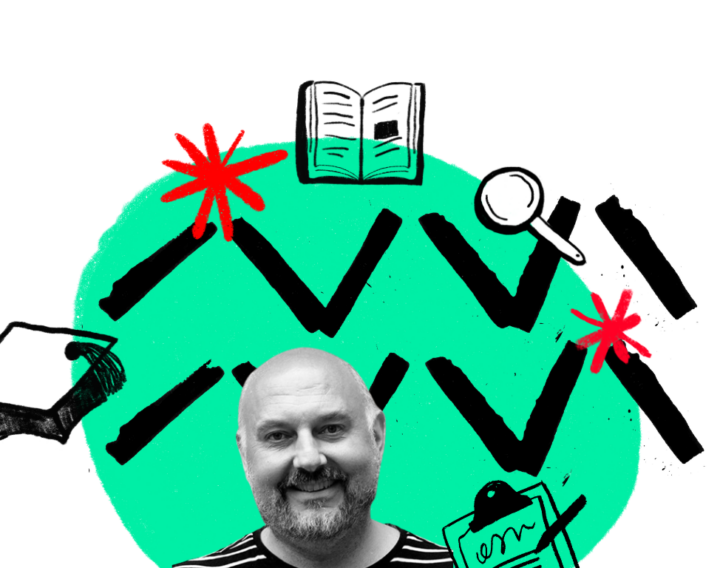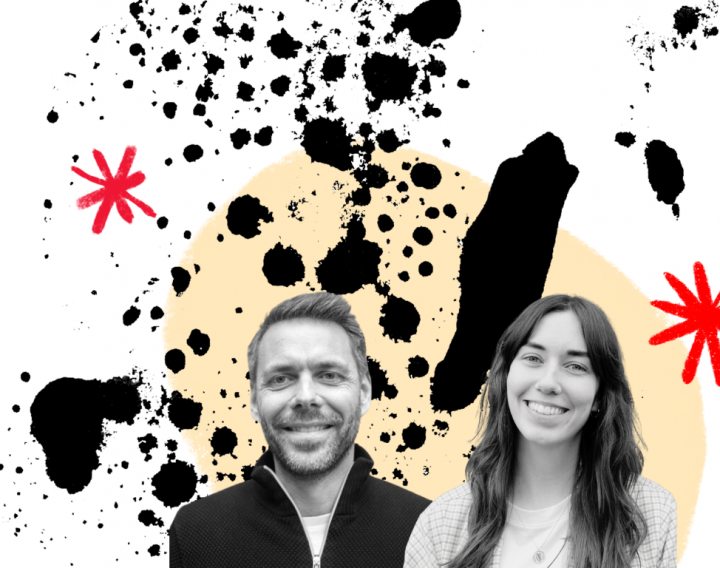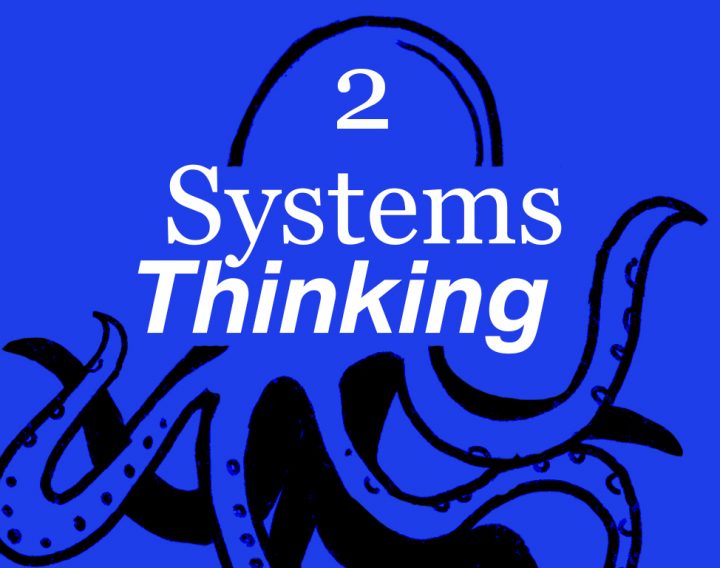Service design is all about understanding people’s needs and delivering services that meet them. So why do we design and implement these services without understanding the impact they have on our planet?
The climate crisis poses a massive risk to meeting the most basic human needs — access to food, water, clean air and shelter. If these risks are to be mitigated, each of us who are designing and delivering public, private and third sector services, needs to work to reduce emissions and find climate-positive solutions.
Environmental considerations need to be positioned as a priority in all of our existing service design standards, including (especially) the UK Government Digital Service (GDS) Service Standard. Currently, the Digital Scotland Service Standard is one of the few that mentions the environment. However even this does not go far enough, “Consider the impact of your service on the environment” is buried amongst eight criteria under point 10 and focuses on minimising impact rather than aiming for climate positive.
Every organisation should have internal environmental experts, but we don’t have time to wait for this to happen. So myself (Ness Wright from Snook) and Ellie Hale from CAST got together and created a set of Sustainable Service Principles. Informed by Ellie’s work with charities and Snook’s research for Cork County Council’s Climate Adaptation Plan.
The principles are designed to make it easier to prioritise and embed environmental considerations within services and organisations, and they can be used now.
While the benefits for the environment and our wellbeing might be obvious, there can also be financial savings that make a more attractive package for those who control the purse strings. For example, consolidating and reusing back-end systems rather than buying new ones, or investing in energy efficiency measures which reduce bills and recover the initial costs.
The principles can be embedded in existing design or sustainability standards, and for organisations that are establishing new standards, we can help design, test and launch these to ensure your services deliver positive outcomes for people and planet.
This is our first iteration. We are looking for partners to adopt, test and provide feedback on the principles to ensure they become robust and widely adopted through collaboration and shared learnings.
Our aim is that it will soon become second nature for everyone who designs services to consider and maximise their environmental impact.
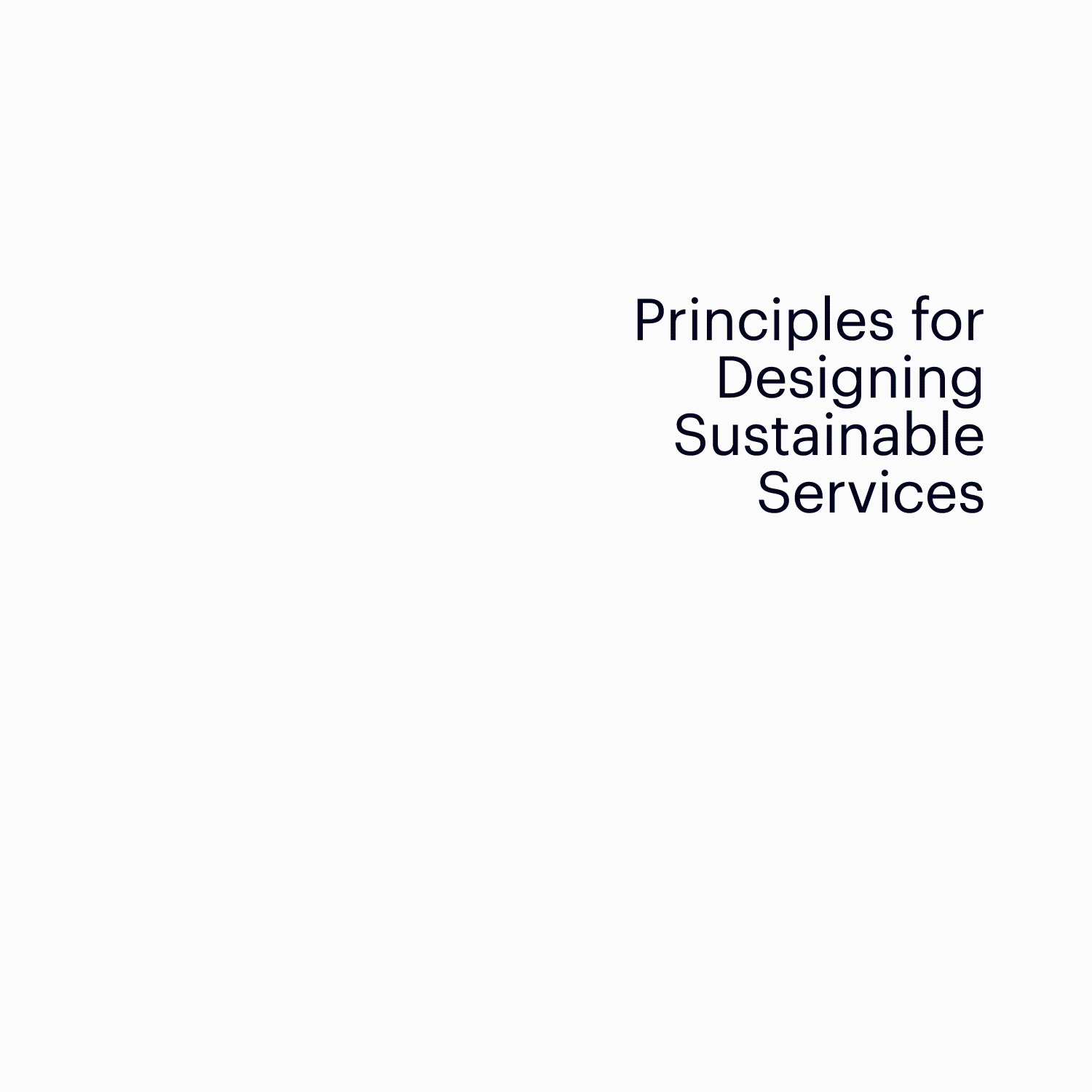
We prototyped eight universal principles for designing and delivering sustainable services across the public, private and third sectors. Each principle contains guidance and practical questions to get started. We chose principles as a fast and shareable format that allows us to test and iterate over time. The principles start with guidance to lay foundations at the organisation level (principles 1–4), then focus on specific service considerations (principles 5–8).
Principles 1–4 | Build the Foundations

“Without strong political backing it’s not going to happen — the work won’t get anywhere. Once you’ve got that, take opportunities and create governance to embed that organisationally as quickly as you can.” – Local authority sustainability officer.
For climate work to receive meaningful resources and attention, it has to be positioned as a priority. You need to win the support of senior decision-makers and embed climate responsibility in strategy, governance, key performance indicators (KPIs) and objectives.
Several organisations we spoke with shared stories of work being deprioritised and sidelined, with budget and resources directed to regulated priorities. Once climate was seen as a KPI, it was easier to dedicate time and hold others to account.
Questions to get started:
- Who do you need to win support from to position climate action as a priority? Who are potential allies, and who can obstruct this?
- How do environmental issues align with your organisation’s existing policies, commitments and KPIs? Can you demonstrate that it helps deliver on existing commitments?
- What information and evidence will these people need to be convinced and make a decision? How will the climate crisis impact your organisation and service?
- How can you embed the climate in strategy, governance, policy and KPI’s? What processes and timelines do you need to be aware of?

“Climate isn’t our responsibility.” – Design lead in government.
The scale and complexity of the climate crisis makes the urge to see it as someone else’s responsibility understandable, but the idea that building sustainability into services is the remit only of dedicated ‘green teams’ is one that we can’t afford to cling to.
If your service or organisation creates emissions and waste, there is something you can do to reduce it.
We continue to be inspired by the work of teams within local authorities, governments, charities and private sector companies that are taking climate action, even though it’s not always in their job title and they are not experts. Their work to prioritise the climate within organisations is already setting new standards for the industry and driving change.
Questions to get started:
- What can you do within your organisation to reduce its environmental impact?
- What can you do through your service(s) to deliver climate positive impacts?
- How can you educate yourself and inspire others?

“Limiting global warming to 1.5°C would require rapid, far-reaching and unprecedented changes in all aspects of society” – International Panel on Climate Change, 2018.
Throughout everything we do as individuals, we must work to increase the ambition of climate actions, knowing that without profound and fundamental change, we will certainly be faced with irreversible, life-threatening and unfairly distributed consequences.
Embedding climate action within the core values of organisations is important, The Common Cause Foundation’s work on values and frames is a useful resource to help start the conversation about how this can be done. H3Uni’s Three Horizons framework is a brilliant tool for bringing groups of people together to open up ambitious thinking about a better future and mapping out practical actions to get there.
Questions to get started:
- What values are important to your organisation? How can you use these to arrive at more radical solutions?
- Where can you push to increase the ambition of plans? What motivates your team and decision-makers?
- How can you make the business case for radical? For example, the cost of investing now versus the costs of incremental change over time.

“Get a group of people who are passionate about climate and build a community.” – Public sector design lead.
Build a community of passionate people within your organisation or service to make climate actions happen. Provide a network for support, knowledge sharing and reflective practice.
As in nature, diversity is important for strength. Invite people with different perspectives and backgrounds, from different departments or even organisations. Include senior decision-makers to raise awareness and win their support.
Questions to get started:
- Who can you interest and invite to form a community of practice? Whose work has a relevant agenda?
- What value will people gain? For example, a safe space to peer review work.
- How can you ensure this community is diverse? Who is missing round the table?
Principles 5–8 | Get into the Details

“We’ve always used evidence. It helps create the ‘oh sh*t’ moment when you realise what it means to achieve zero carbon… it lifted all the stones up and showed the physics of what needs to happen.” – Local authority climate officer.
Knowing where to start can be overwhelming. Collecting easily available data about the current situation will help you make informed decisions about where to start, where to focus your efforts and avoid making assumptions.
Data is also important to inform service improvements, to understand the existing impacts and benefits, and ensure any improvements have a positive impact.
Several local authorities started by collecting data about energy use and waste in their buildings and services. Using existing sources, such as energy bills and staff mileage claims for transport, they quickly understood which areas produced the most emissions, and then planned actions to tackle these first.
Questions to get started:
- Where does your service use water, and produce greenhouse gas emissions and waste? Which activities have the largest impact?
- Where can you easily find existing data to estimate this? For example, energy bills, expense receipts, mileage claims.
- How can you use data to compare options and inform decision making? For example, when deciding whether to maintain, replace or reuse a legacy system.
- What processes can you put in place to collect helpful data and measure improvement going forwards?
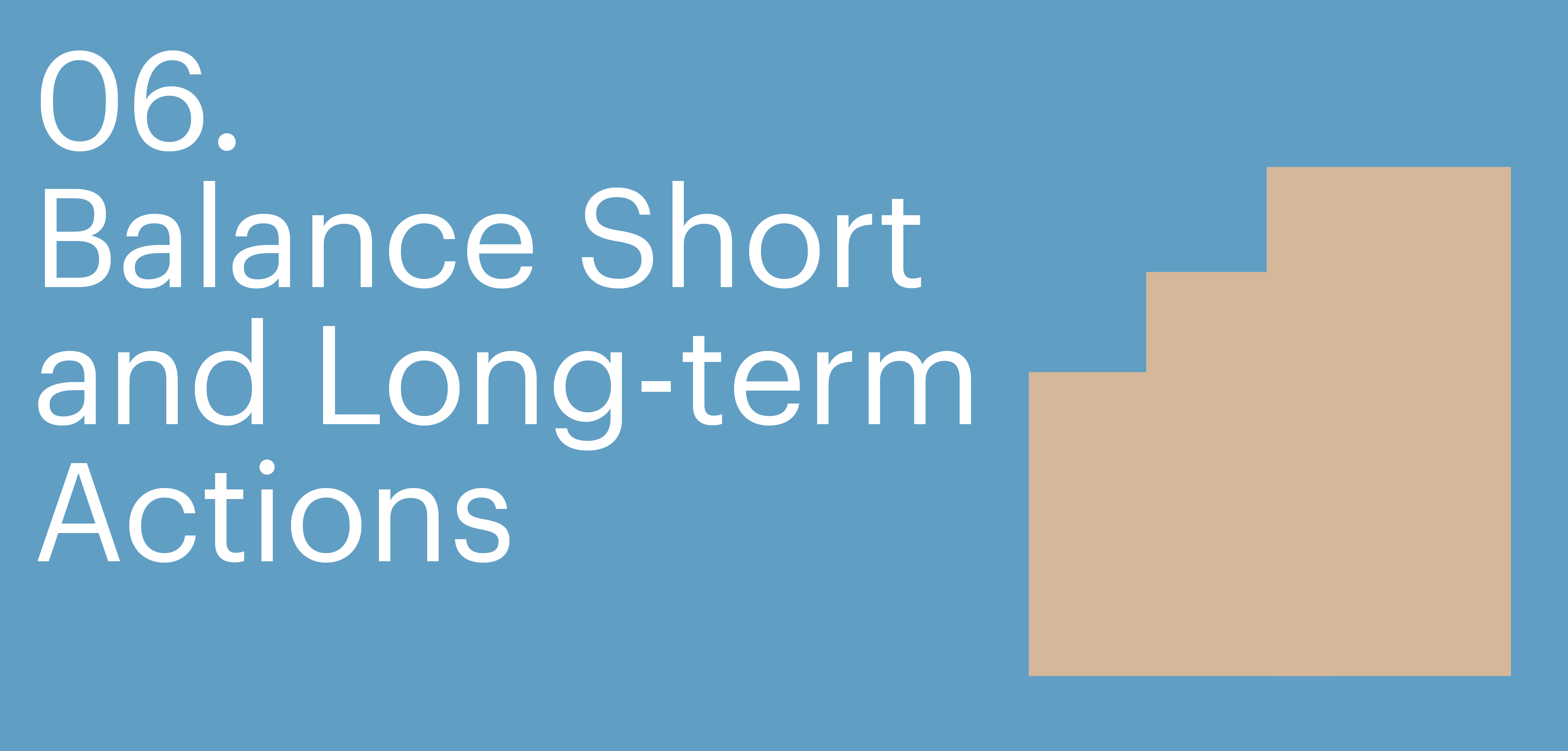
“Balance tackling the things with highest emissions with the quickest wins. It’s important to take people with you on the journey… you need some things where people can see a difference here and now.” – Climate lead within a public body.
Actions with the greatest impact on emissions can take time to implement, as they involve infrastructure. They need to be balanced with immediate actions where people can experience a tangible change. Quick wins bring value in raising awareness, creating mindset change and triggering a ‘spillover effect’ that often inspires people to take further action.
Some organisations we spoke with were working so hard on long-term infrastructure that they had forgotten to communicate this to the public or their colleagues. Others were picking off the smaller, quick-wins to avoid making decisions on the harder topics. All agreed that being conscious of balancing the large initiatives with quick wins is key.
Questions to get started:
- What long-term actions do you need to start now? How will you communicate progress on these in the short term?
- Which quick wins can you implement now? How will you make other people aware and build support for future actions?
- How can you compare the costs of long-term action and quick wins? Will long-term actions make more financial sense over an extended timeframe or not?

“The key thing is the actions would all either enable us to generate an income or make savings… they make sense, regardless of their carbon reduction impact.” – Local authority environment officer.
To win support, climate actions need to have strong social and financial benefits as well. Identifying co-benefits increases the likelihood of climate actions happening because the solutions make business sense and people want to be part of them. Sustainability can also give weight to other initiatives.
For example, Fife Council has invested in energy reduction measures to all council-owned buildings, such as upgrading lighting, heating systems and insulation. These are not only good for environmental objectives — they will save millions of pounds over the next 10 years whilst improving the quality of life for citizens.
Questions to get started:
- Which actions will benefit people and planet, and also make financial sense?
- Which actions could create long-term savings or new revenue streams?
- How can sustainability add weight to other planned initiatives and service priorities?

“We do what we can with the resources we have… you have to find a way to mainstream the spend into your major capital programmes.” – Local authority climate officer.
To make climate action happen we need to be pragmatic and make rapid progress with the resources available. For example, rather than spending months collecting baseline data, use existing data to outline the major actions and get started. Rather than purchasing new equipment or building new systems, how can we repair and recycle what we already have?
We also need to be opportunistic, to use all service decisions as opportunities for climate action. For example, which contracts are coming up for renewal where you could add sustainability to the procurement requirements?
Camden Council’s Sustainability Team is working to increase environmental impact by including sustainability requirements across all other department objectives and budgets. For example, working with highways to procure a low carbon tarmac for road surfacing, and working with planning to build policies which incentivise residents to decarbonise private homes and shift to sustainable transport.
Questions to get started:
- What resources already exist that you can reuse? For example, data, systems, servers, equipment, staff resources and capabilities.
- Who can you collaborate with to share costs and resources? For example, other departments or service providers.
- What opportunities are coming up that you can use to implement climate improvements? For example, contract renewals or budget reviews.
Do you want to improve the environmental impact of your organisation and services?
Snook is looking for partners to adopt, test and provide feedback on the principles to ensure they become robust and widely adopted through collaboration and shared learnings.
We want to hear from you and see how we can work together. Get in touch via curious@wearesnook.com, with the subject ‘Principles for Designing Sustainable Services’.
Creative Commons License
This work is licensed under Creative Commons Attribution-ShareAlike 4.0 International (CC BY-SA 4.0).
You are free to use and reuse these principles. Our aim is for as many people as possible to adopt and iterate so we can improve them together. We ask that you follow the Attribution-ShareAlike 4.0 International License. This means crediting the creators and sharing any adaptations under the same creative commons license.
Originally published on Medium by Ness Wright

